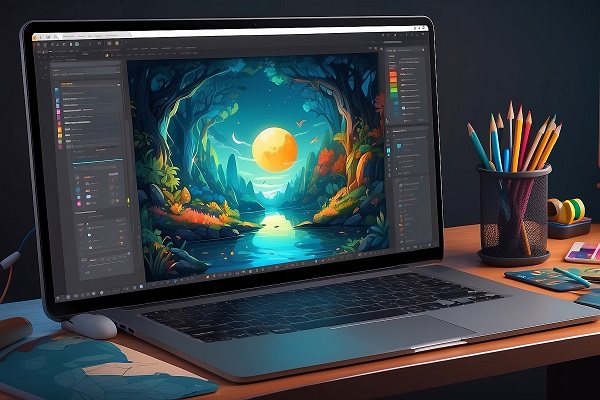Best Tips for Editing Web Images

When it comes to editing web images, ensuring they are visually appealing can significantly impact your website's success. From choosing the right tools to enhancing colors and contrast, each step plays a crucial role in captivating your audience. By implementing strategic cropping and resizing techniques and optimizing images for the web, you can create a seamless user experience that keeps visitors coming back for more. Stay tuned to discover the best practices that will elevate your web images to the next level.
Choosing the Right Editing Tools
When choosing editing tools for web images, it's important to consider your proficiency level and desired outcomes. Adobe Photoshop and Lightroom offer advanced features for retouching and image enhancement, suitable for users familiar with complex editing techniques.
Canva and Freepik are user-friendly platforms ideal for beginners starting with image editing. Understanding basic functions such as cropping, resizing, and adjusting brightness is essential for enhancing web images effectively.
The emergence of AI tools has streamlined the editing process, automating tasks and improving efficiency. Proficiency in these photo editing tools can significantly enhance image quality, thereby improving the overall impact of your web design.
Also, you can check out these PNG images.
Starting With High-Quality Images
Starting with high-quality images is crucial for creating a visually appealing website. Professional photographers can supply you with high-resolution, error-free images that enhance the overall look of your site.
Utilizing AI technology to improve image quality can add a professional touch effortlessly. Clear and high-definition images not only attract more visitors but also effectively engage users, leading to increased user engagement.
By choosing images that complement your content, you can significantly increase conversions on your website. Remember, the quality of your images plays a vital role in driving web traffic, boosting user engagement, and converting visitors into customers.
Prioritizing high-quality images is key to establishing a successful online presence.
Strategic Cropping and Resizing
Strategic cropping and resizing are essential techniques for maintaining image quality and optimizing web layout. Consistent image sizes are crucial for improving the aesthetics and user experience of a website.
Utilizing AI-powered image editing tools can streamline the cropping and resizing process, ensuring a smooth workflow. Strategic cropping allows for highlighting specific details, enhancing the overall visual appeal of the website.
Resizing tools like TINYPNG can optimize image loading speed, contributing to better website performance. Remember, optimizing images through cropping and resizing is key not only for enhancing user experience but also for ensuring fast loading times and an attractive visual presentation of your website.
Optimizing Images for the Web
Optimizing images for the web involves understanding file types and compression techniques. When editing web images, the choice between PNG and JPEG files is important. PNG files are suitable for images with transparency needs, while JPEG files work well for photographs due to their smaller file sizes.
Tools like TINYPNG can be used for resizing to enhance image loading speed. Properly naming image files helps in content organization and search engine optimization. When compressing images, note that JPEG images may lose quality faster compared to PNG images.
Consistent image sizes throughout a website can improve layout and user experience. Prioritizing image optimization can lead to better search engine rankings and quicker loading times for web content.
Enhancing Colors and Contrast
Improve the visual impact of your web images by fine-tuning saturation, vibrancy, and brightness levels to refresh lackluster visuals and achieve a harmonious look.
Colors play a vital role in capturing viewer attention, making enhancing them crucial for boosting engagement. Striking the right balance is key to avoid overwhelming viewers.
Consistent color schemes across your web images are essential for establishing a unified and polished appearance. When applying filters, ensure they align with your brand's aesthetic and enhance rather than overshadow the main content.
Thoughtfully adjusting colors and contrast can significantly elevate the overall image quality, resulting in a more professional photo that resonates with your audience.
Conclusion
In conclusion, by using the right editing tools and techniques, starting with high-quality images, strategic cropping and resizing, optimizing for the web, and enhancing colors and contrast, you can create visually appealing web images that attract more visitors and improve user experience.
Remember to always prioritize quality and consistency in your editing process to ensure a cohesive and engaging website that resonates with your audience.